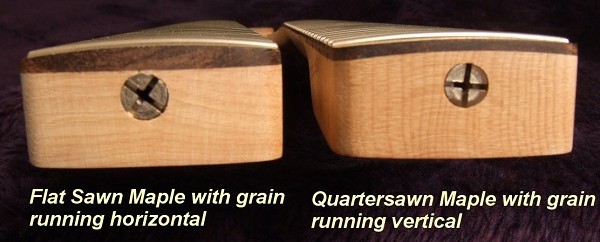 If you are interested in buying a G&L guitar and live in the USA, you can skip over this blog (unless you are curious). However if you live outside of the USA, as of January 1st, 2017 things got a little complicated.
If you are interested in buying a G&L guitar and live in the USA, you can skip over this blog (unless you are curious). However if you live outside of the USA, as of January 1st, 2017 things got a little complicated.
CITES, the international organization that protects wildlife (animals as well as plants) implemented new restrictions on the use and export of Rosewood. Essentially Rosewood became a restricted material, and products containing Rosewood are now required to have documentation to verify that they are legally harvested.
How did this happen? It’s all about demand, and mostly in China where the expanding middle class developed a particular appetite for Rosewood furniture. The spike in demand created over-harvesting and illegal harvesting. Rather than see Rosewood wiped out, regulations have been put in place. You can debate the logic and methodology, but something needed to be done. Also note that “Rosewood” is a rather generic term that includes many varieties including Cocobolo, Bubinga, etc.
What are the practical implications?
The short story is that new guitars containing Rosewood manufactured after January 1st 2017 that are going to be exported out of the USA, need documentation verifying the sourcing of the Rosewood. Manufacturers have to apply for the paperwork and permits to export guitars containing Rosewood. There is of course a lot more to it than that, but that is the quick summary.
Dealers (like me) in most cases do not have this type of documentation; it’s the manufacturer that holds the permit. So most dealers will not be able to ship a post-January 2017 guitar with rosewood out of the country. It stands the risk of being confiscated at customs, and nobody gets the guitar back.
Guitars built before January 2017 can be shipped out of the country provided they have a re-export certificate. These are obtained from the Department of Fish and Wildlife. The certificates cost money, and take time to obtain. A dealer can also apply for a “Master File” and purchase re-export certificates in advance, but it’s still a process. Suffice to say, many dealers are just not going to bother with exporting a guitar with Rosewood.
This is bad for independent dealers selling overseas but a boon for distributors. International distributors buying directly from the manufacturer will get legally documented product, and far less competition from independent dealers exporting into their home country.
Non-commercial (person-to-person) sales are technically exempt. I can imagine this becoming a loophole as some dealers will have a relative or friend be the shipper of record on a guitar going out of the country.
G&L Alternatives
Aside from the occasional fancy top or limited editions, Rosewood on a G&L guitar is limited to the fretboard. The obvious alternatives are Maple and Ebony. Those materials can be exported freely without additional documentation.
If you are not partial to those materials, G&L has also started using a material called Chechen, also known as “Caribbean Rosewood.” It’s a hard and dense Central American hardwood that looks and feels very much like Rosewood. It has a more color variation than most rosewood, but it’s attractive and a good substitute. Most important is that is not subject to any restrictions and is widely available. Dealers with international customers looking for a way around Rosewood should consider Chechen.
Have an Open Mind
Traditional tone woods are just that: Traditional. They have obvious desirable qualities, but what they also have in common was that at the the time they were first used, they were widely available. And there were a lot fewer people on the earth. Guitar builders have been exploring new materials for decades, and many alternatives have been proven to be just as good as the traditional woods. Just like it very hard to get totally black ebony these days, guitar players will have to adjust to other paradigm shifts in guitar materials. In many cases the adjustment is more mental than sonic. Conventional wisdom dies a slow death, and there will always be players that cling to whatever “old way” they hold most dear.
If you want to play it totally safe, just avoid Rosewood. There are lots of other good materials both synthetic and natural. If you have your heart set on Rosewood, the sky isn’t falling, but obtaining that Rosewood guitar may take more diligence and planning.

